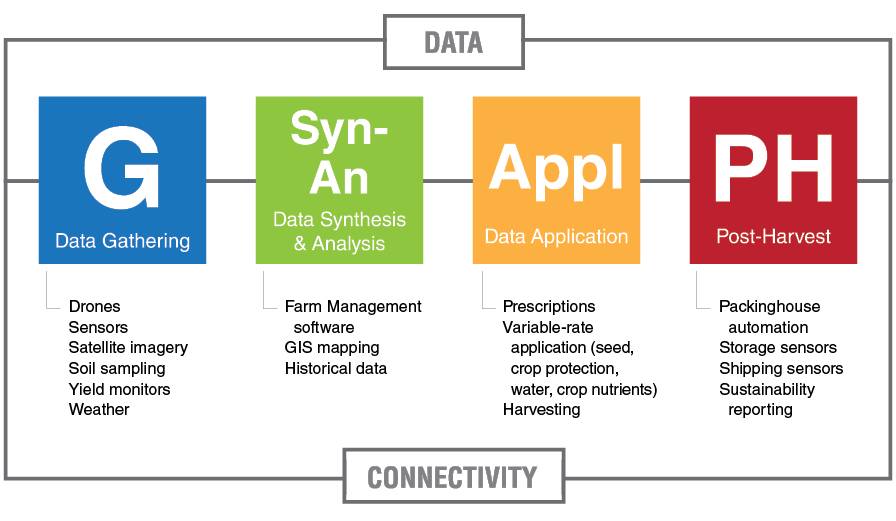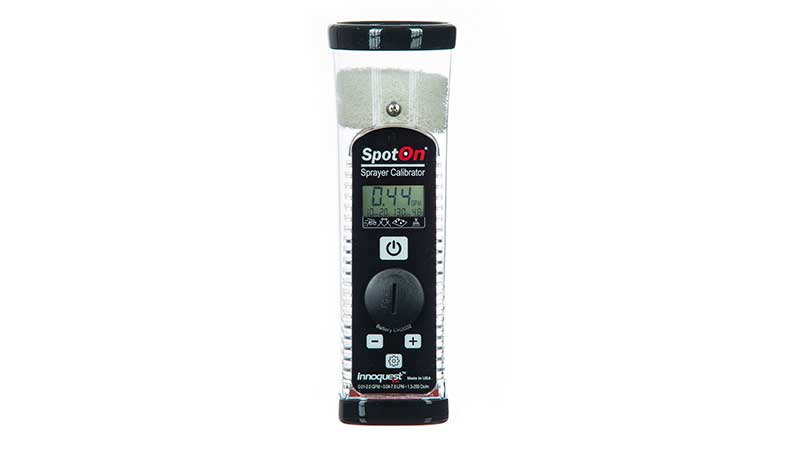It’s Time We Define ‘Precision Agriculture’
How many of your customers are “precision growers”?
Don’t answer this question too quickly. Some specialty crop growers are steeped in cutting-edge technologies yet don’t see themselves as practitioners of what historically has been called “precision agriculture” — using yield monitors, for instance, or variable-rate application (VRA) of crop inputs. Conversely, there are thousands of row crop growers in the U.S. using fairly commonplace technology — GPS-guided autosteer, for instance — who consider themselves precision adopters.
So who’s right, and who’s wrong?
To answer this question we must get to a durable definition of precision agriculture that is specific enough to distinguish between real users and non-users, yet is at an altitude high enough to transcend multiple crop areas and constantly evolving technologies. Let me explain.
An Enduring Definition of Precision
More than 20 years ago a representative of a high-tech defense contractor that was vitally interested in entering ag markets gave me an in-person demo of GPS in action. It was a memorable experience, yet his definition of precision agriculture was equally unforgettable. Precision was not really about GPS, he said — accurate geolocation and field guidance even then were seen as a means to an end. “It’s really all about use of data,” he told me. “Data gathering, data analysis, and data application — that’s it.”
I believe this definition of precision agriculture remains valid today, and it’s expressed in the chart below that guides our ongoing coverage of precision agriculture in CropLife®, PrecisionAg® Professional, and other Meister Media titles.
By our definition, a true precision grower — or retailer, or service provider — must do all three of the following:
■ Data gathering (G). This once was mostly about grid soil sampling and yield monitors. But today we have imagery from drones and airplanes and satellites, data from soil sensors and moisture sensors, sophisticated weather forecasting, and on and on. The list of data sources is now nearly endless, but it’s also nearly useless if there isn’t …
■ Data synthesis and analysis (Syn-An). In the early days of precision this often meant one-dimensional colored field maps of, say, yield and fertilization. But today’s sophisticated farm management software platforms can house dozens of data points and layer them so that a grower, agronomist, or consultant can compare, contrast, and analyze the data to their heart’s content to make specific agronomic recommendations. How did X variety do in field X in a rainy season with heavy insect pressure and light nitrogen application? How likely is it to perform similarly in the coming year? Such platforms theoretically can give you these answers or at an approximation thereof.
■ Data application (Appl). Data gathering, synthesis, and analysis are moot if the wisdom they represent doesn’t reach the field — e.g., if the VRA planter breaks down, or if the hi-res camera installed to monitor pest populations and regulate the release of mating disruptors misfires. In fact, I think precision is soon going to see a resurgence in the design and engineering of practical field application tools which bring all the data-informed elements of precision together. And when it does, it will be something of a revival of precision’s early days.

In 1996, when we at CropLife (then Farm Chemicals) magazine teamed up with Purdue University’s Center for Agricultural Business on the industry’s first retail dealership adoption survey in precision agriculture, Purdue’s Dr. Jay T. Akridge and Linda D. Whipker wrote that “VRT may represent the high end of precision agriculture technology in that it combines all of the data collection efforts with site-specific recommendations and advanced application technology to deliver inputs on a prescription basis.”
This is still all-so-true today, except now I would argue VRT — with its use of data collection, analysis, and application — now presents the only definition of precision agriculture.
However I also would add a fourth dimension in response to recent technological and societal changes: Postharvest (PH). Technology, data, and connectivity — vital to linking up and giving the full picture to in-field production — are extending to packinghouse automation, to storage and transport sensors, and to the traceability/sustainability programs that increasingly are favored by large food manufacturers and retailers.
“Moneyball” for Agriculture
You ask: But hasn’t production agriculture been doing all this all along — gathering, analyzing, and applying information?
We have. But here’s an analogy. Precision agriculture rightly has been compared to “Moneyball” in sports. Baseball scouts long have collected data on players and analyzed it and used it to make batting orders or draft-day decisions. And yet, are baseball executives who are armed merely with radar guns, laptop computers, and “hunches” about their players entitled to call themselves “Moneyball” practitioners? I think not.
They do merit this distinction, however, if they collect multiple data points on individual players in myriad game situations, mix data and crunch it in countless ways, and filter it through their own lens of practical experience — all in the service of producing pre-agreed-upon, highly measurable outcomes.
In baseball, the intended outcome of “Moneyball” typically is wins. In precision agriculture it’s typically yield or crop quality, and often both.
So I ask again, how many of your growers are true “precision growers”? There may be fewer — or more — than you think when measured against the strict definition as I’ve laid it out here. And I think it’s high time we all agreed on a strict definition of what exactly is “precision agriculture” — this one, or something like it, and I welcome your feedback — so that we can uniformly measure the true rate of adoption, just as we at CropLife and the good people at Purdue set out to do way back in 1996.






